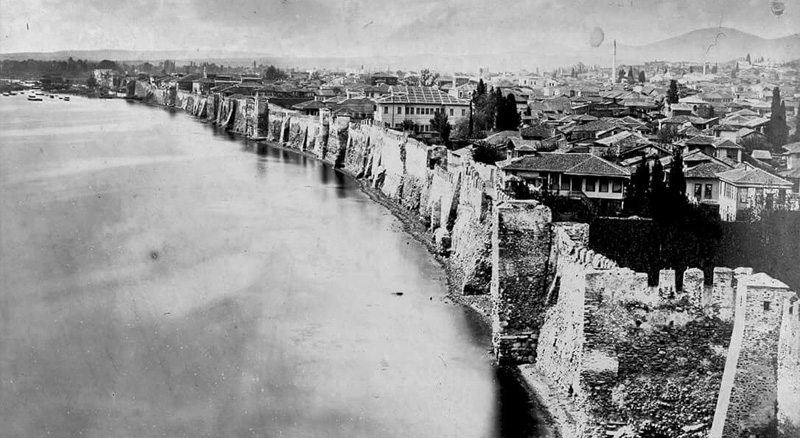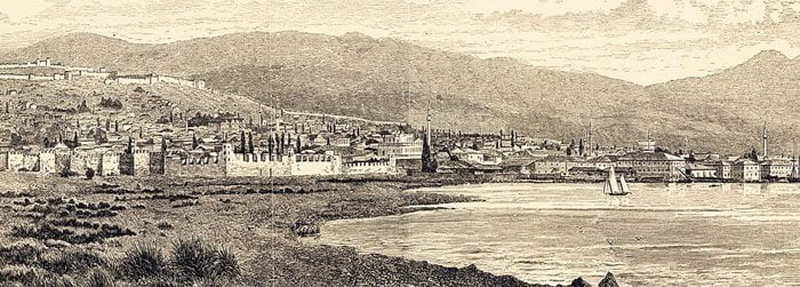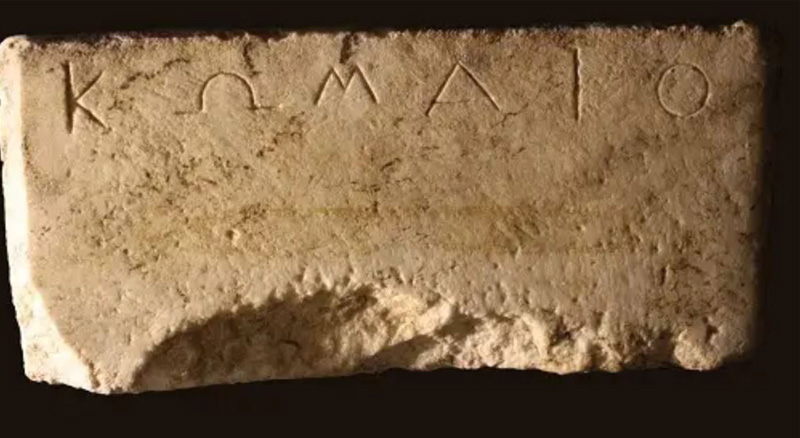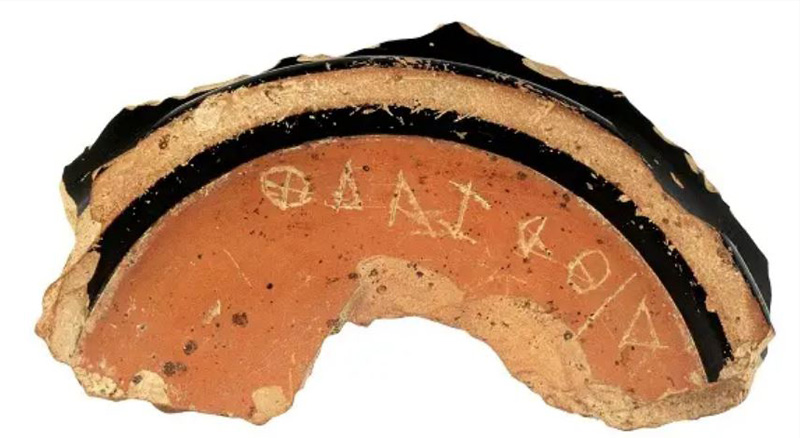How Thessaloniki was founded?

Who were its first inhabitants? – The contribution of Polichni
How Thessaloniki was founded and who were its first inhabitants? – The contribution of Polichni
What was involved in Kassandro’s ambitious plan to found a great city at the end of the 4th century BC.
He made a political decision, which hid an economic and strategic background, but it was neither straightforward nor immediately implementable. Kassandros knew that the establishment of a large city in the 4th BC. century could not be done overnight, because even if the infrastructure was set up, finding citizens required time and… money. Maybe and the fist of weapons.
![The only existing photograph, of the 4th c. Roman sea walls of Thessaloniki, dated to 1863. The sea walls were totally demolished by 1867. The photograph was recently discovered in the Hungarian national archives, within a set of photographs taken by three Armenian brothers; Viken, Hovszep and Gevorg Abdullahjan, who were pioneering photographers in the Ottoman empire and had also worked for the Sultan. [Alexis Gateley]](https://hellothessaloniki.gr/wp-content/uploads/2023/02/Thessaloniki-1863-800x463-1.jpg)
How Thessaloniki was founded
Thessaloniki was founded in 316/315 BC, a landmark year for the history of the city that has borne the same name ever since. According to the geographer-historian-writer and philosopher, Strabo, Kassandros founded the city by the settlement method, i.e. transferring inhabitants from 26 (or is it 54?) comae and polisma (settlements and smaller towns) located within a radius of 35 kilometers around the new city.
Among them (with their current names) Polichni, Panorama, Oreokastro, Melissochori, Lagyna, Thermi, Neo Rysio, Hortiatis etc. According to Strabo, the settlements, whose inhabitants abandoned them for the new, large city, were destroyed. So was a population transfer easy, inexpensive and bloodless? Probably not.
A first observation that must be made is that Strabo lived from 63 BC. until 23 AD, i.e. 300 years after the foundation of Thessaloniki and apparently during some of his wanderings he saw ruined and abandoned settlements. Today, from the excavations it is known that half of these settlements were still active even after the colonization, i.e. during the Hellenistic and Roman times.

As the head of the Department of Prehistoric and Classical Antiquities of the Ephorate of Antiquities of the City of Thessaloniki, Asterios Lioutas, points out, “we must be wary of the information given by Strabo about the settlement of Thessaloniki, except for four: a) the founder of the city was Kassandros, b) the name Thessaloniki is that of his wife, who was the daughter of Philip and the half-sister of Alexander the Great, c) the names of the areas in which the settlements are included and d) the way the city was founded was that of the settlement”.
Strabo does not give details of how the settlement took place, he only gives one way, the verb “kathelon” (destroying), and he drew this conclusion by seeing the ruins of the once prosperous settlements. So Kassandros removed the inhabitants by force and moved them to Thessaloniki, even destroying the city walls?

“Kassandros must have followed an escalating process within the framework of the logic and gentle management of the project, before reaching the destruction of the settlements,” says Mr. Lioutas and explains: “Initially with his staff he identified which comas and polises he wanted in the settlement . And then he addressed the ruling class, the nobles and the priesthood and perhaps even financed the moving of the families to the new houses, which he took care to have prepared. If there was no satisfactory response, it is possible that he proceeded with tax exemptions and monetary compensations. As a last resort, if his plan did not go through, he probably used military … persuasion, whatever that means: coercion and perhaps demolition and burning of the houses, a measure consistent with the violent character of Kassandros, as we are told from the ancient sources”.
How Thessaloniki was foundedHow Thessaloniki was founded
In the excavations that have been carried out in these settlements, layers of destruction, even traces of burning, have been found, dating to the end of the 4th BC. century, i.e. at the time of the Kassadrian settlement, but then how is it explained that they continued to exist until Roman times?
“Based on logic alone, as no one gives us any information, farmers and ranchers did not move, because a city does not need them. On the contrary, this class is necessary in the countryside, in order to cultivate the land, raise the animals and produce the products, with which a city is fed”, answers Mr. Liutas.

The reasons for the establishment of Thessaloniki were political.
Kassandros wanted to prevail in Macedonia.
An economic point of strategic importance. It was a hub to the north and a port where trade could develop.
Toumba, Karaburnaki, Thermi, Plagiari, and finally Pylaia – a completely unknown archaeological site until 2012 when it was revealed during the subway works – were some of the towns from where Kassandros moved population. In fact, given that some names refer to more than one komi or ancient settlements, the “about 26” settlements according to Strabo that participated in the settlement, according to archaeologists, are actually at least 54.

The bank and the cemeteries of Polichni
One of the most interesting towns is that of Polichni, in the current municipality of Pavlos Melas, south of the junction of Lagada street with the Thessaloniki Inner Ring Road. Antiquities from almost all eras are concentrated in the area: from the Neolithic the settlement of Stavroupoli, from the Bronze Age and the Early Iron Age the Toumpa of Polichni and from the Early Iron Age and historical times the bank (a hill with a flattened top ) of Polichni, together with the two cemeteries. These antiquities date from 5900 BC. until the imperial Roman era (2nd-3rd century AD).
How Thessaloniki was founded
According to Mr. Liutas, in the deeper archaeological layers of the bank of Polichni, no building remains were found, only coarse unpainted pottery from the end of the 11th and from the 10th century. The oldest building phase was dated to the beginning of the 9th century and was followed by four others in the middle of the 8th, the beginning of the 7th, the middle of the 6th and the beginning of the 5th century BC. After the settlement of Kassandros, the population on the bank decreases drastically and is limited to pockets around this hill, as well as the hill of Toumpa of Polichni. Many mobile finds that came to light show the trade relations with the Aegean regions, such as Corinthian and Attic vessels, a skyphos with an engraved inscription in the Caric alphabet, and also part of an Egyptian figurine.
At a distance of 150 meters west of the bank, the western cemetery was excavated and the 1,250 graves that have been identified so far cover a large time span from the Early Iron Age and the Geometric (11th-8th century BC) to the Roman era, while 202 urns have been found. In one of the tombs a small plinth was discovered with an inscription from the first half of the 4th century. e.g. COMAIO, which probably refers to a resident of the settlement of Polichni with Ionian origin.
In the eastern cemetery, which occupies an area of approximately 120 acres, nearly 300 densely placed graves from the Archaic to the Hellenistic era have been uncovered.
“It is documented by excavations that the life and use of the settlement on the trapezoidal hill of Polichni decreased drastically at the end of the 4th c. BC, at the time of the Kassandreian settlement. But from the excavations at the base and around the bank, as well as from the findings of the eastern main cemetery, we know that life continued. It is therefore a valid hypothesis that some inhabitants of Polichni, as well as of the other towns and villages, remained after the founding of Thessaloniki in their ancestral lands to cultivate them, raise animals and produce the products with which they fed the new city” , said Mr. Lioutas.
Thessaloniki Private Classic Sightseeing Tour
Source: eranistis.net
Text: Maria Rizzaleou

